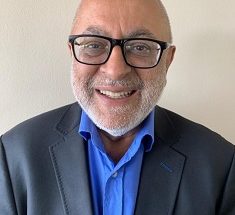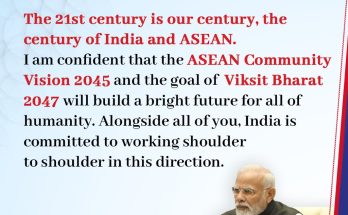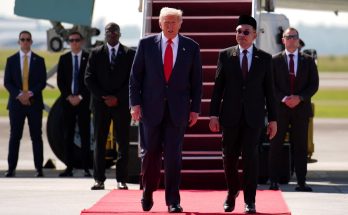 The country is gearing up for a most interesting election season; what it will throw up will be as keenly watched as who it will throw out.
The country is gearing up for a most interesting election season; what it will throw up will be as keenly watched as who it will throw out.
Never has an election been so centred around controversial personalities. The Bharatiya Janata Party declared Modi as its Prime ministerial candidate recently; the ruling alliance is yet to oblige. Much is being written upon about the pressure on the Congress to declare its prime minister, obviously Rahul Gandhi, but the party appears hesitant.
Demands from senior leaders, including cabinet ministers, to make the already-known announcement are being ignored.
Meantime, the run-up to the elections appears mired in the face-off between Modi supporters and his detractors; there’s allegations, conspiracy theories, as well as Facebook posts in all genres.
Conspiracy theories have already started appearing on the front pages of leading dailies. Muzaffarnagar is the writing on the wall: it will be an unruly ugly fight; parties will be big on polarising society to garner votes.
BJP leaders display a sense of pride in repeating that, thanks to Modi, this may turn out to be India’s first US-presidential type campaign ever.
It will be interesting to watch if Modi can really give it that kind of universal star appeal. The diversity of our country favours a more localised, state-specific approach.
It’s probably a good time now to stop mulling over the cosmetic histrionics and body language, and start delving into what the parties have to offer.
 It’s evident that the electorate is tired of rhetoric; it needs substance. Although Modi’s rallies, and sammelans, are on the rise, his loud assertions have already sprouted a layer of fungus.
It’s evident that the electorate is tired of rhetoric; it needs substance. Although Modi’s rallies, and sammelans, are on the rise, his loud assertions have already sprouted a layer of fungus.
In a recent ex-servicemen rally in Rewari, Modi ranted about the government’s alleged apathy towards soldiers, especially in the context of Pakistan, but he stopped short of telling the rapt audience what his own stance would be. One can only guess!
Turning to the ruling alliance, Rahul Gandhi’s appearances are fewer but he too is lost in a fog. In the last one week, Rahul’s rallies inevitably followed Modi’s programmes, in frequency, and foggy retaliatory rhetoric.
Both reveal little of substance: their future policy plans.
 When Rahul first visited Dalit households in Bundelkhand, it was written off as a freak incident. But despite the sarcastic attacks and allegations of theatrics by opponents, the Congress vice-president has kept up his stance of solidarity with the downtrodden and deprived – from Bundelkhand to Bhatta Parsaul to Niyamgiri.
When Rahul first visited Dalit households in Bundelkhand, it was written off as a freak incident. But despite the sarcastic attacks and allegations of theatrics by opponents, the Congress vice-president has kept up his stance of solidarity with the downtrodden and deprived – from Bundelkhand to Bhatta Parsaul to Niyamgiri.
Interestingly, this has led to confusion within his own party. Is Rahul’s pro-poor, pro-tribal stance in consonance with the reform-oriented economics of the government? Is it tenable, if it is not?
Recent steps taken by the govt like the Food Security Act, the laws for Forest Rights and the Land Acquisition, Rehabilitation and Resettlement Act, have spoken: it is Sonia and Rahul’s vision that rules Parliament.
Besides the pro-poor, welfare-oriented decisions of the government, recent speeches of the Congress leader also betray which way the party wind is blowing; even the focus on employment has a welfare-state orientation.
The BJP camp, led by Narendra Modi, has always been critical of this UPA position. It has challenged the pro-poor moves by questioning the legitimacy of the National Advisory Council and the financial implications of doling out largesse, both during the UPA-I and II.
Modi has hit out at the UPA’s failure on every possible occasion. From his ‘ABCD of corruption’ attack to his repeated jabs at runaway inflation, Modi has sought to show up the ‘bad’ governance at the centre in the backlight of his ‘good’ governance in Gujarat.
 If Rahul Gandhi’s USP is his sympathy for the poor, Modi has concentrated on the turnaround in the agriculture and power sectors. These, coupled with his massive campaign of bringing water to the arid regions, are his government’s accomplishments. Big-time investment opportunities in Gujarat is another of his claims. Of course, political pundits are quick to point out that India is not Gujarat, and to govern India requires chops more substantial than developing Gujarat.
If Rahul Gandhi’s USP is his sympathy for the poor, Modi has concentrated on the turnaround in the agriculture and power sectors. These, coupled with his massive campaign of bringing water to the arid regions, are his government’s accomplishments. Big-time investment opportunities in Gujarat is another of his claims. Of course, political pundits are quick to point out that India is not Gujarat, and to govern India requires chops more substantial than developing Gujarat.
Congress has returned the favour by highlighting the social indicators of Gujarat, but it is a weak volley. Modi seems to be winning for now.
While Rahul Gandhi’s detractors question his lack experience, his supporters and the Congress back-room boys believe that his refusal to be a part of the government until now may be an asset. Will he be able to turn this asset into a virtue for his proposed government? No one knows, for Rahul is still to unfold his plan for his future government.
In the end, media hype and all those colourful rallies replete with Ekta-Kapoor soap-style dialogues might spike the channel TRPs, it’s doubtful they can give the country a solid plan for forging ahead next year.
(Smita Mishra is a veteran political commentator. The views expressed in this column are personal reflections of the author).
Author Profile
- India Writes Network (www.indiawrites.org) is an emerging think tank and a media-publishing company focused on international affairs & the India Story. Centre for Global India Insights is the research arm of India Writes Network. To subscribe to India and the World, write to editor@indiawrites.org. A venture of TGII Media Private Limited, a leading media, publishing and consultancy company, IWN has carved a niche for balanced and exhaustive reporting and analysis of international affairs. Eminent personalities, politicians, diplomats, authors, strategy gurus and news-makers have contributed to India Writes Network, as also “India and the World,” a magazine focused on global affairs.
Latest entries
 India and the WorldNovember 26, 2025G20@20: Africa’s Moment – The Once and Future World Order
India and the WorldNovember 26, 2025G20@20: Africa’s Moment – The Once and Future World Order DiplomacyOctober 4, 2025UNGA Resolution 2758 Must Not Be Distorted, One-China Principle Brooks No Challenge
DiplomacyOctober 4, 2025UNGA Resolution 2758 Must Not Be Distorted, One-China Principle Brooks No Challenge India and the WorldJuly 26, 2025MPs, diplomats laud Operation Sindoor, call for national unity to combat Pakistan-sponsored terror
India and the WorldJuly 26, 2025MPs, diplomats laud Operation Sindoor, call for national unity to combat Pakistan-sponsored terror India and the WorldJuly 25, 2025When Fire Ends, Diplomacy Begins
India and the WorldJuly 25, 2025When Fire Ends, Diplomacy Begins







